After 2 weeks, it is the morning low tide sessions.
The first weekend trip in this session brings us to Beting Bemban Besar (BBB, Triple B).
So where is this Beting Bemban Besar? Let me show you the map...
 |
| Image by WildShores |
From the above map, Beting Bemban Besar is located off the west side of Pulau Semakau, Singapore's landfill island. It is a submerged reef. The updated Google Map not longer has our submerged reefs labelled but we can still see the reef outlines from the satellite image.
Triple B is the largest submerged reef I have visited so far and it is my first trip here. The rest of the team have visited Triple B before and today, Ria decided that we should visit the northern end of the reef. On the boat, Ria discussed with Alex from Submit Marine where our landing point will be.
 |
| Image by Rene Ong |
Landing in darkness is very tricky as we can only depend on our torchlights to tell us where and what we are stepping on. The tide was still quite high and it was about knee heigh when we landed. We couldn't even see any highest point on the reef. From the dinghy, we could see that the
sargassum seaweeds (
sargassum sp.) have started to bloom.
I could only wade around and trying to get further inwards in the darkness and wait for the tide to recede. The other team members had swimming cameras with them so they have already began taking pictures underwater.
My first find was a small patch of
carnation coral (
Pectinia sp.) with bleaching ends.
 |
| Carnation coral |
More about corals later.
The only flatworm I saw for this trip was the
spotted black flatworm (
Acanthozoon sp.). It was observed to be entering a hole.
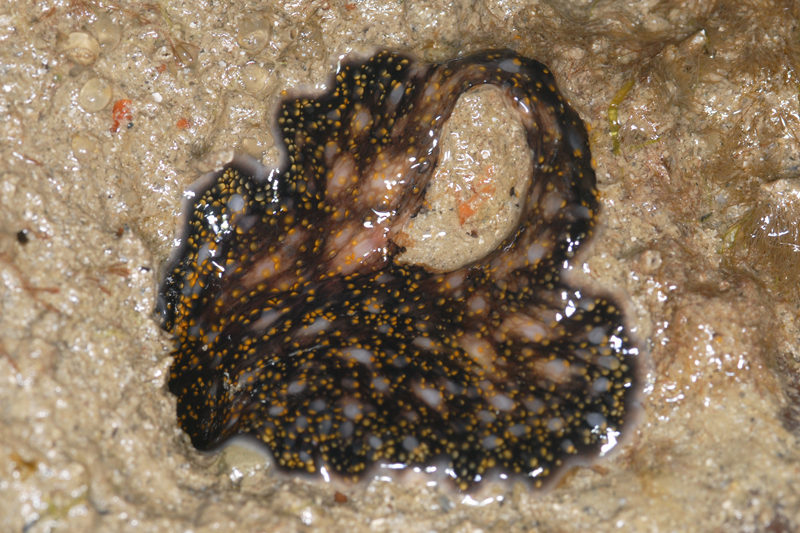 |
| Spotted black flatworm |
From the image, it seemed to have a hole on its body?
The team saw a few
giant carpet anemone (
Stichodactyla gigantea) and we found the
false clown anemonefish (
Amphiprion ocellaris) in a few of them. In fact, I saw 5 of them in this trip.
 |
| First two very shy clown anemonefish |
 |
| A less shy anemonefish |
 |
| I believe this is a baby anemonefish. It was quite small when I saw it appear for a while. |
In the dark, the octopus are out hunting.
 |
| Octopus lying on the sand surface |
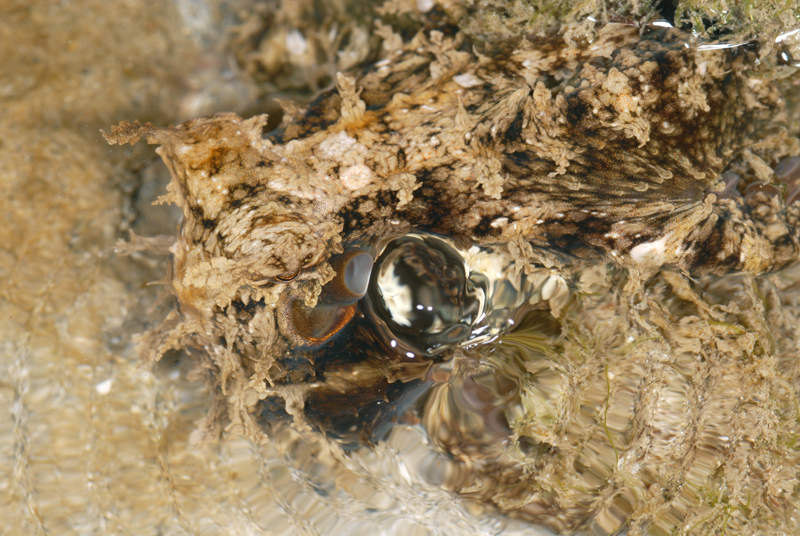 |
| Octopus blowing water |
 |
| Octopus swimming away |
In a shallow pool, I found a
kite butterflyfish (
Parachaetodon ocellatus). It was really shy and it went into hiding when I shifted position. This was the only picture I got.
 |
| Kite butterflyfish |
As the first light emerges, transforming the sky from black to light blue, a flock of white bellied sea eagle flew from Pulau Sudong to Pulau Semakau. The flock consisted of adult and young eagles, calling out for each other as they flew over Triple B.
 |
| An view of the eagle flying by. |
Along the way, I happened to chance upon a
common sea star (
Archaster typicus). It looked quite lonely moving around by itself. There could be more common sea star and perhaps they are staying put under the sand.
 |
| The common sea star |
 |
| Underside of the sea star, showing the mouth. |
 |
| Tube feet on its arm |
As more light emerges, the sky is shown with beautiful reddish light streaks.
 |
| Light streaks revealing |
There were two sponges which I documented. One of them is the
'hairy olives' sponge (
Stelletta clavosa), which I call it the cactus ball, and the other is the
lumpy pink sponge (
Haliclona cf. baeri).
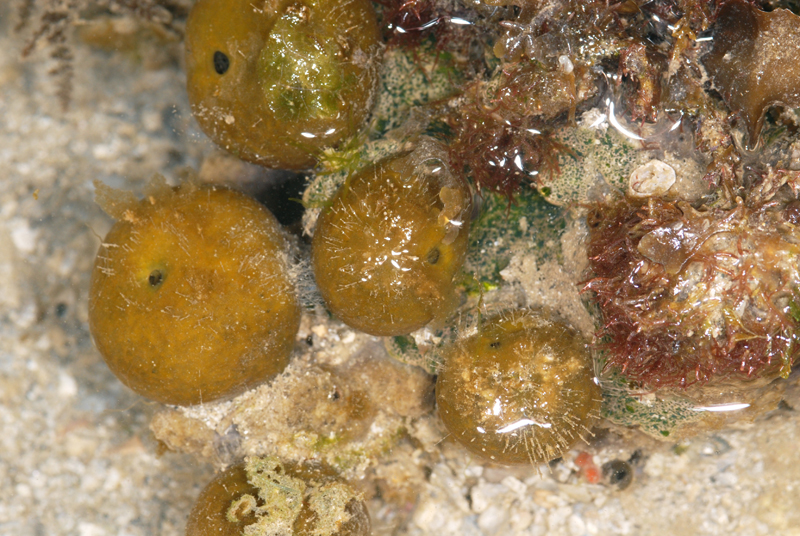 |
| 'Hairy olives' sponge |
 |
| Lumpy pink sponge |
The giant carpet anemones were very beautiful and I finally manage get to do a better observation of the underside. The body column has pink dots.
 |
| A fold of the giant carpet anemone, showing the underside. |
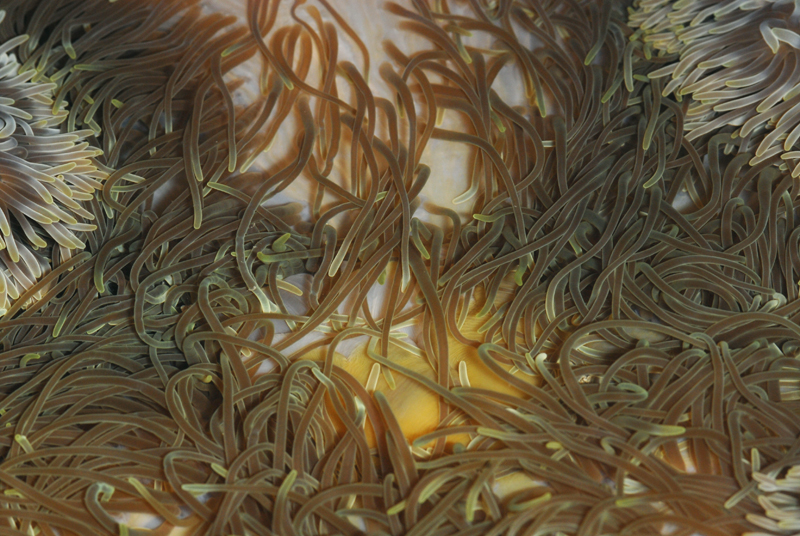 |
| Overside of the anemone, showing a part of the oral disk (in yellow). |
Some parts of the reef is covered with many different types of sponges.
 |
| Other types of sponges |
Then the sun revealed itself in the horizon and rises slowly. It created a beautiful sight and colour on the reef.
 |
| Sunrise |
 |
| Beautiful reflection of the sunrise on the reef |
On a grassy part of the reef, I saw two
swimming anemone (
Boloceroides mcmurrichi). These are the biggest swimming anemone I have seen so far. One of them shows a part of it with yellow base. Pretty view. The swimming anemone, from the larger ones, have a dark ring band on the base of each tentacle.
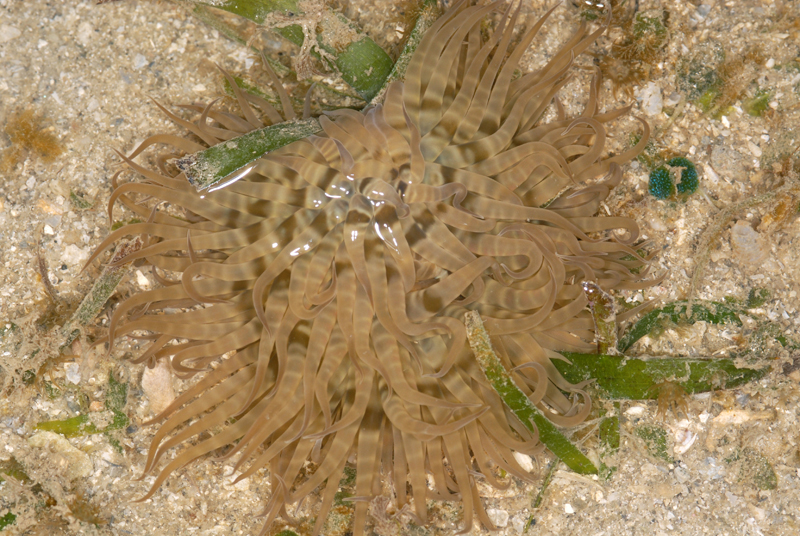 |
| The largest swimming anemone I saw. |
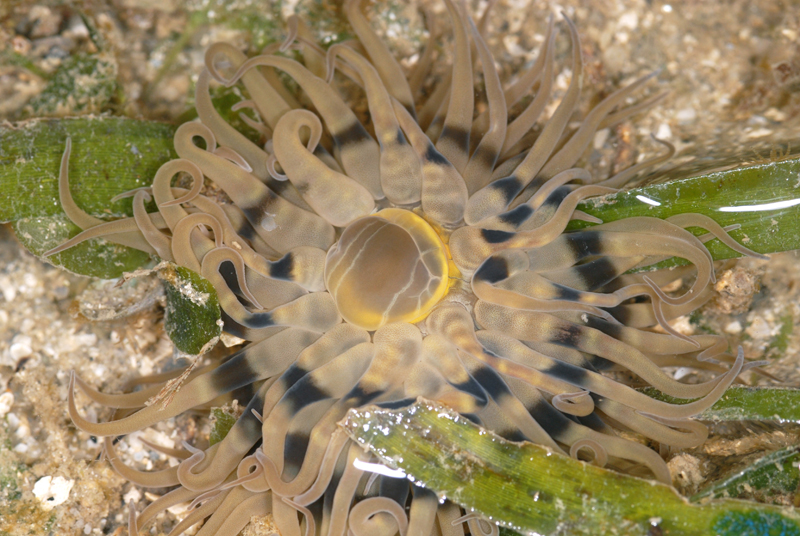 |
| Another swimming anemone with its oral disk. |
Then I came across a
big synaptid sea cucumber (Family Synaptidae) with large feeding tentacles. The body is long and soft with four rows of bumps along the length of the body, separated by four lines.
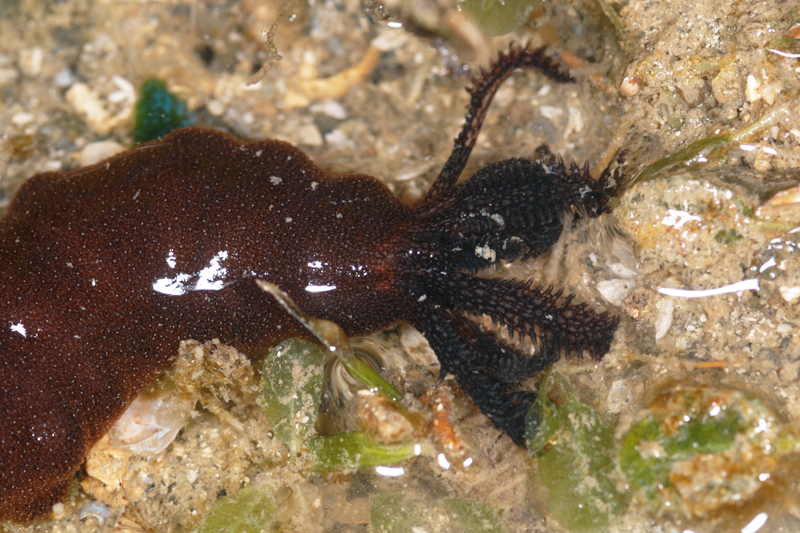 |
| Closeup view near the feeding tentacles |
 |
| Wider view of the sea cucumber |
Nearby, I found a
Pearl conch, a.k.a. Gong-gong, (
Strombus turturella (canarium)). It leaped and gave me a fright when I move the shell. It is an alive snail. I felt how powerful its muscular elongated foot is.
 |
| Gong-gong snail |
There were many
solitary fan green seaweed (
Avrainvillea erecta) scattered on the reef and most of them, I noticed, were of "T" shaped.
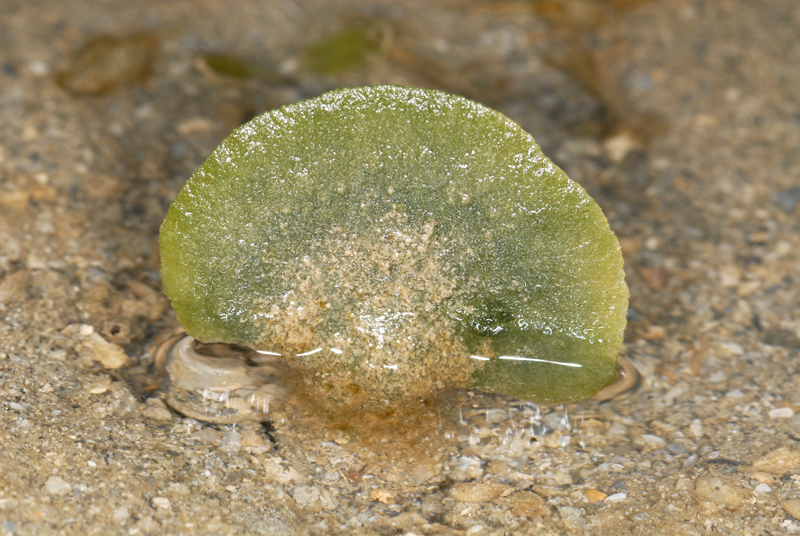 |
| Solitary fan green seaweed |
Rene found the
orange-spotted gymnodoris nudibranch (
Gymnodoris rubropapulosa). This nudibranch is a voracious predator as it eats other nudibranch. Rene got a video of a mating pair.
 |
| Orange-spotted gymnodoris nudibranch |
The most special find of the day was the
cushion stars (
Culcita novaeguinea). I actually saw two cushion stars, thanks to Ria and Kok Sheng for finding them. Kok Sheng saw 4 cushion stars! By this time, taking photos was rather tricky as the tide has turn, bringing in brown substances and floats on water surface making it challenging to take clear pictures of submerged objects.
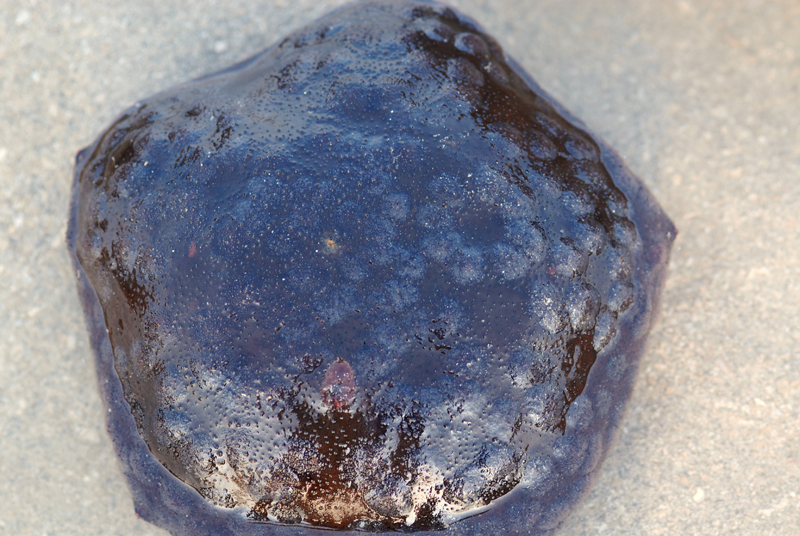 |
| Cushion star 1, top view |
 |
| Close up of the mouth |
 |
| Cushion star, underside |
 |
| Cushion star, side view |
 |
| Cushion star 2, top view |
 |
| Close up of patterns |
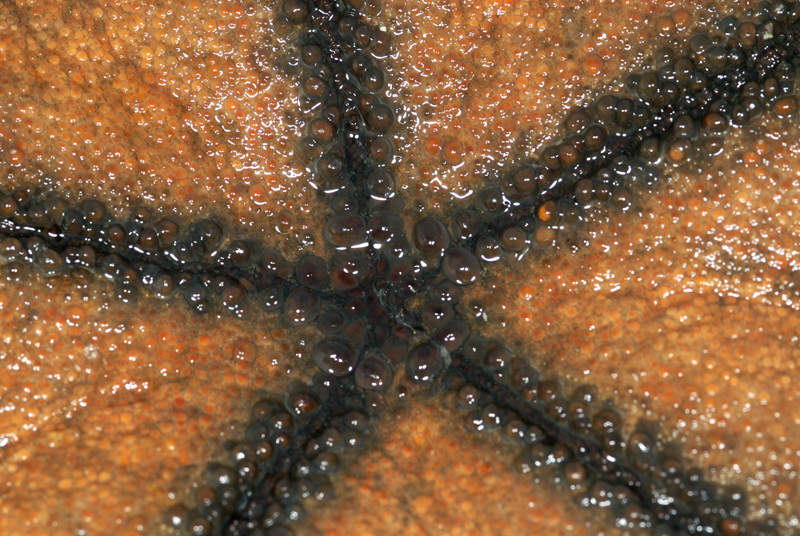 |
| Closeup of mouth |
 |
| Closeup of arm |
 |
| Tip of the arm, showing some tube feet |
 |
| Side view |
Time for corals...
There were many corals spotted and my objective was to document those that showed signs of paleness and bleaching. However there are so many other pretty corals on this reef. I will let the pictures so the talking.
 |
| Favid coral 1 |
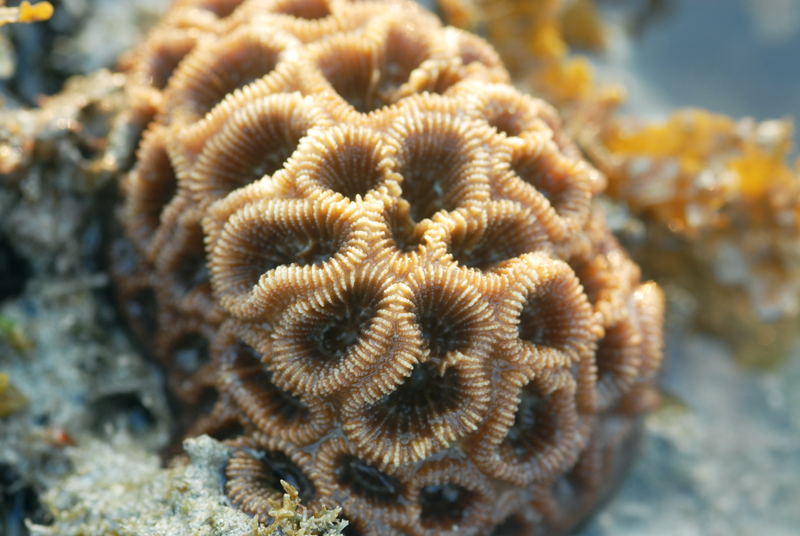 |
| Favid coral 2 |
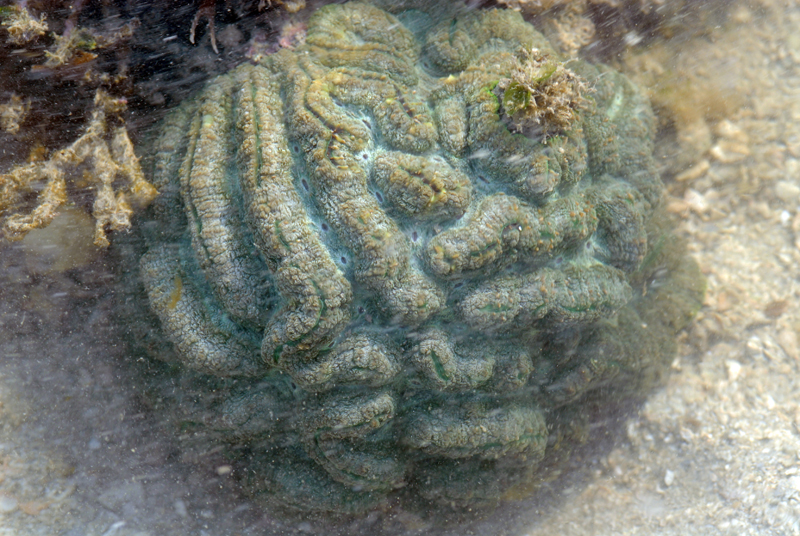 |
| Grooved brain coral (Symphyllia sp.) |
Through out the trip, there were many of these little net like structure. I thought it was some kind of fishing net. It turned out to be the
lacy red seaweed (
Martensia elengas)
 |
| Lacy red seaweed |
What would be the best way to end the trip by being able to see 3 black tip reef sharks and 3
blue-spotted fantail ray (
Taeniura lymma). Well, I did not really see the whole shark. I only managed to get a glimpse of the body. Same goes for the fantail ray. In daylight, they are very sensitive to movements.
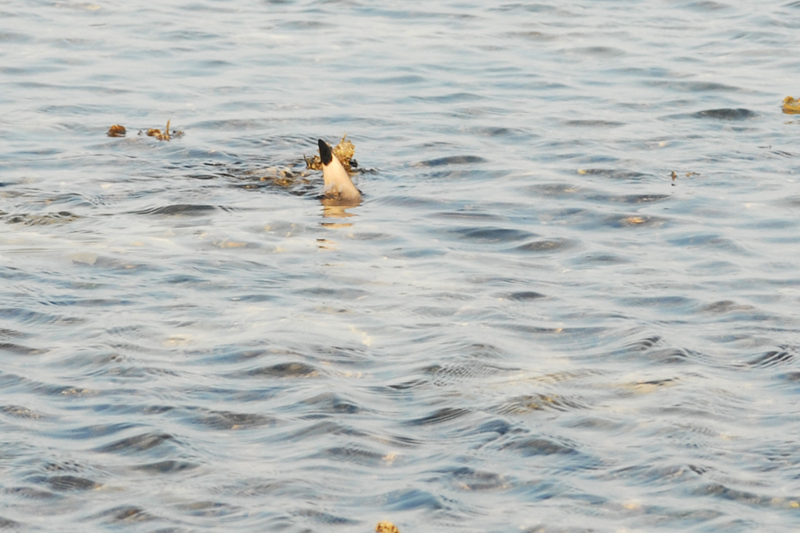 |
| Fin of the black tip reef shark |
 |
| A glimpse of the blue-spotted fantail ray |
It was a great trip having seen so many interesting things Triple B.
Soon the tide was coming in fast and we had to leave this wonderful place.
Ria also blogged about her trip on
WildShores.
My next trip will be two weekends later.
Weekday trips are difficult for me to attending. I am a school teacher working from 7:20 am till about 2 pm - 5pm. I have tried once and I was zombified by mid morning. Not a good feeling when you are trying to stay awake and teach at the same time.








































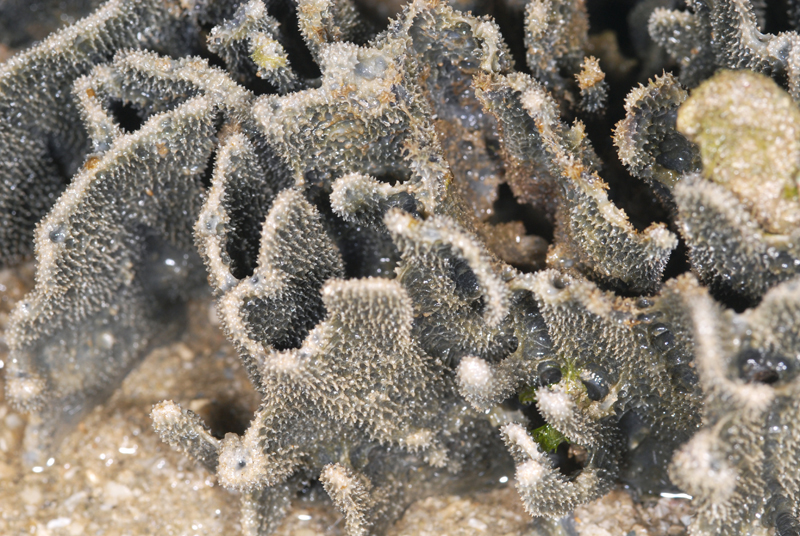
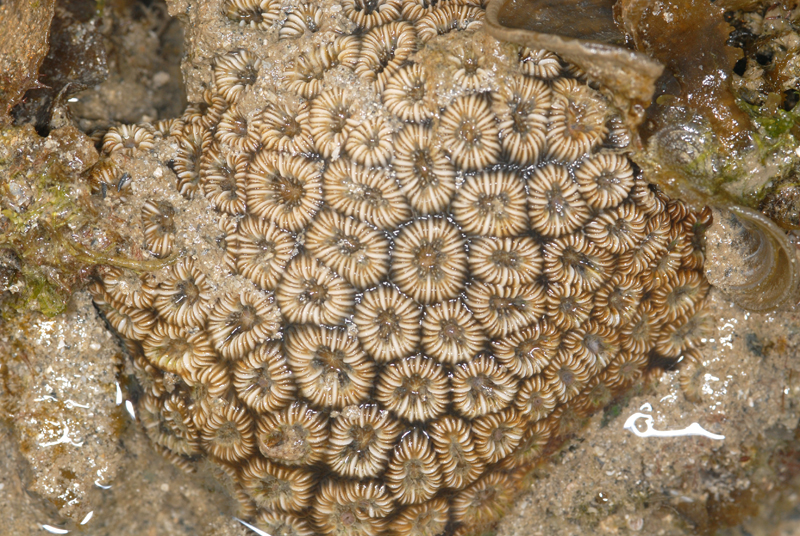


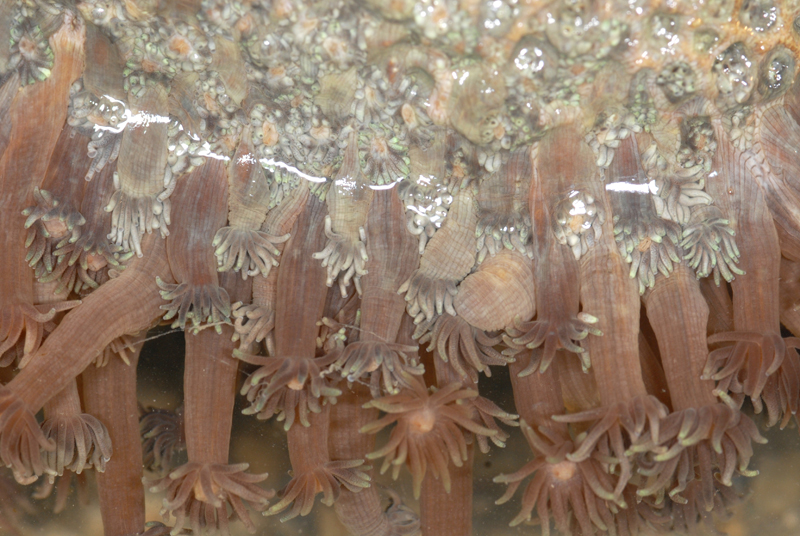
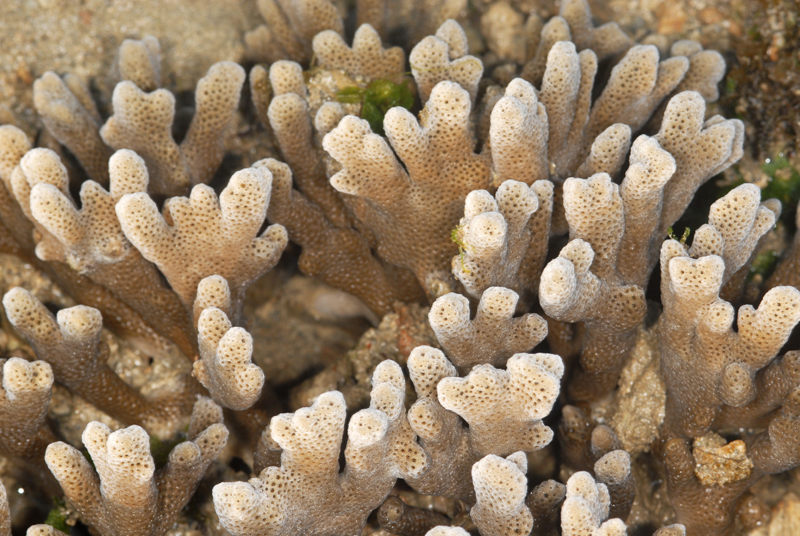
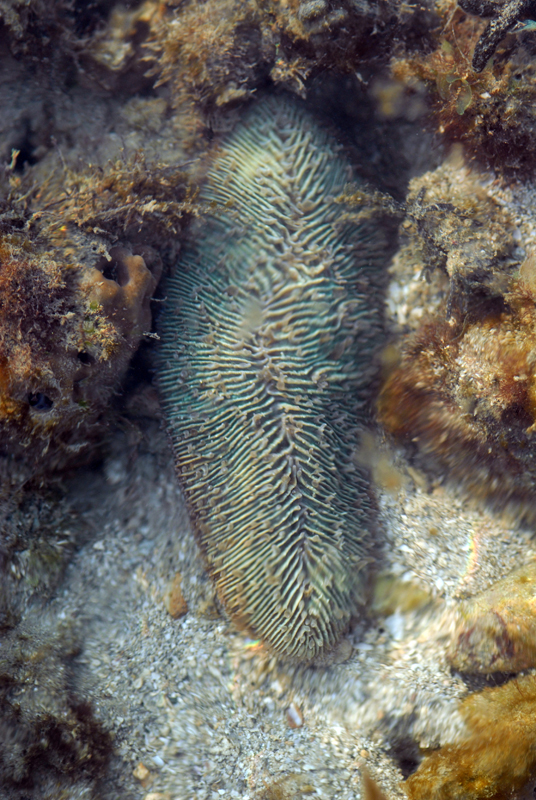

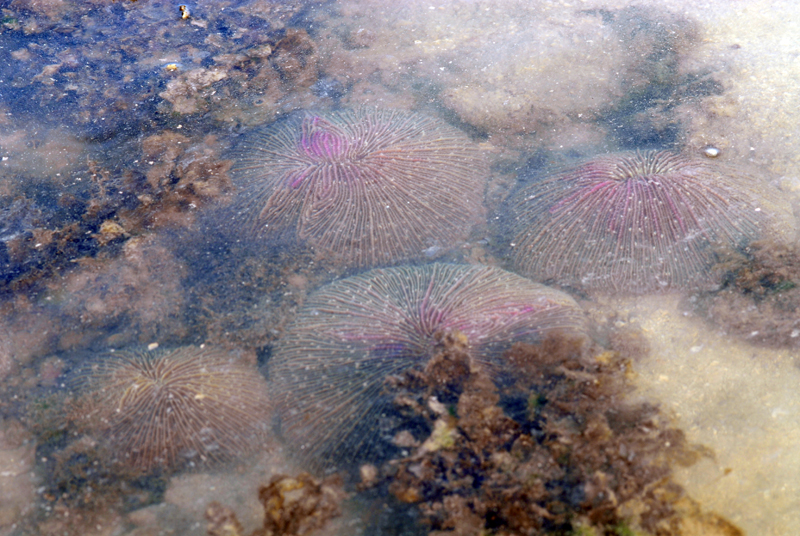




Fantastic story and photos. Thank you for documenting this. - Jay Diver
ReplyDeleteAwesome pics and so very useful information about many sea creatures. I will visit your blog regularly to read and know more about Coral reefs and Sea creatures. Thank you very much. - Nachu Subramanian
ReplyDelete@Nachu Hosanna,
ReplyDeleteThank you for the encouraging words.
I will try to blog once I have done a trip. It all depends on the tides.